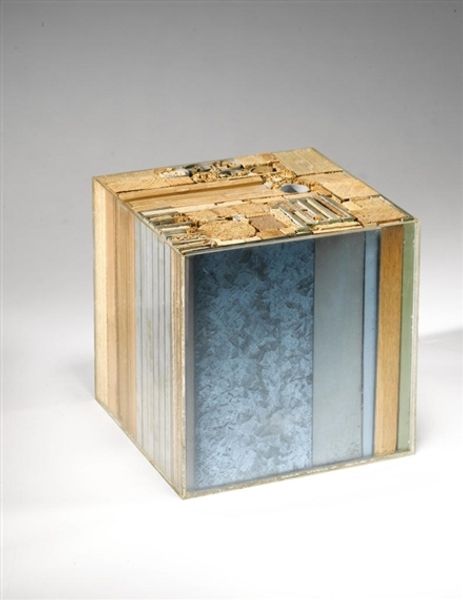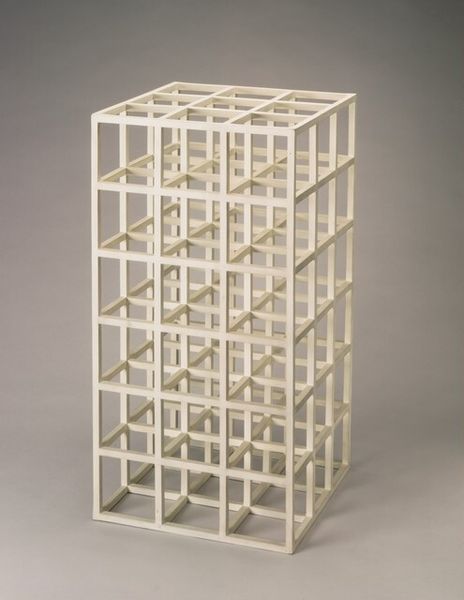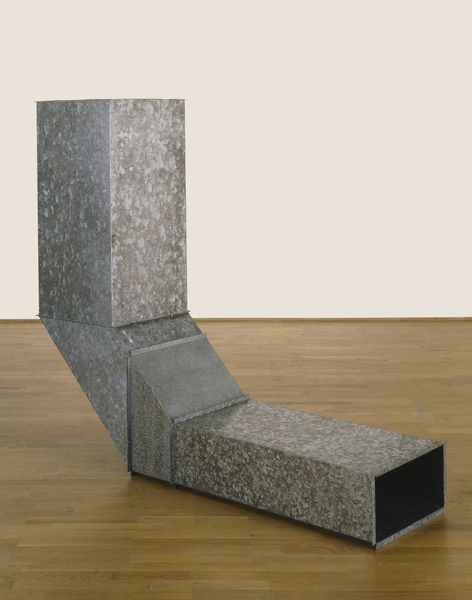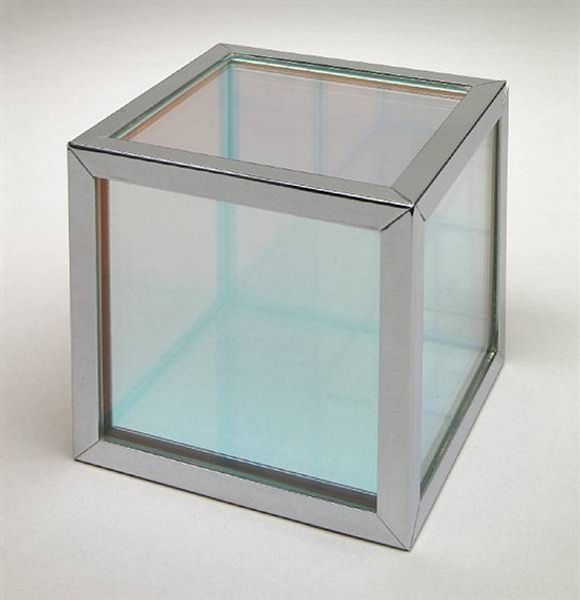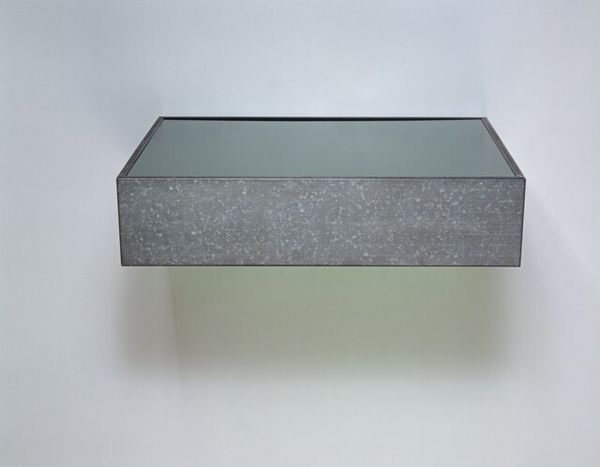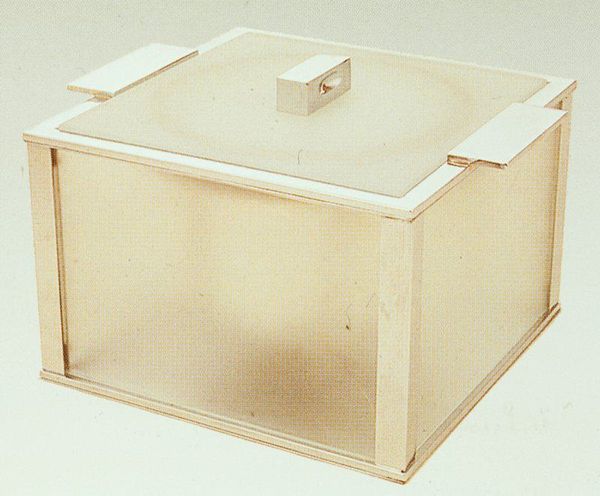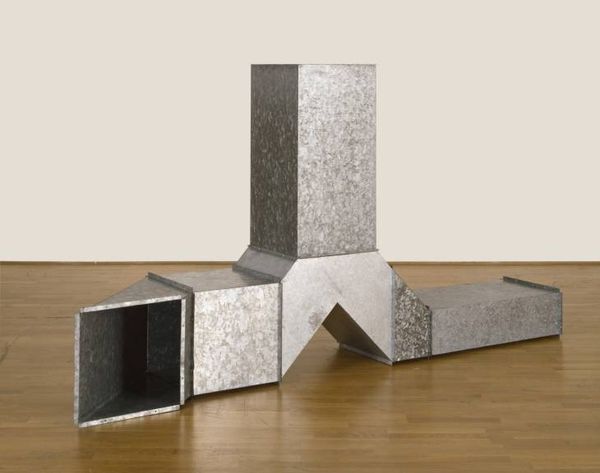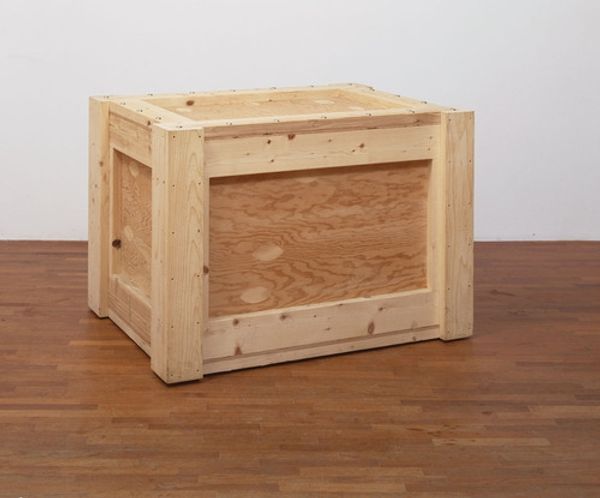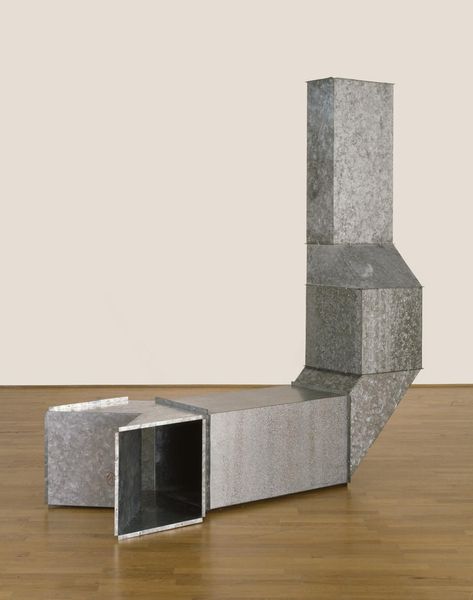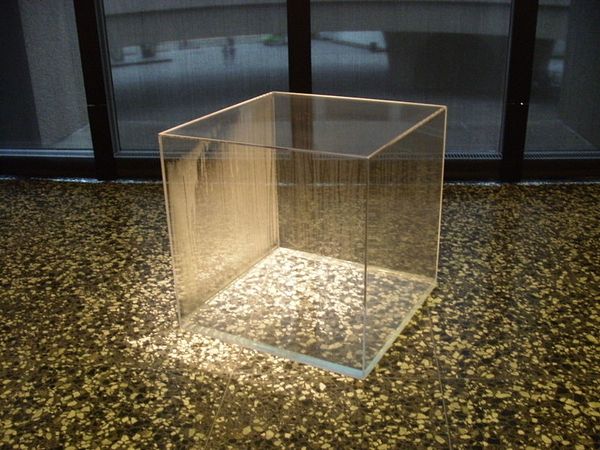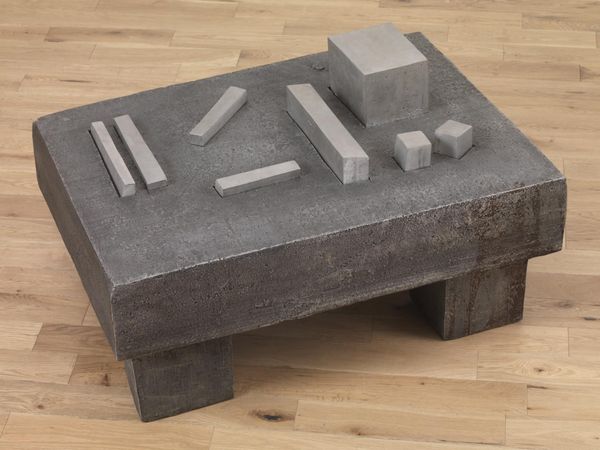
metal, readymade, sculpture
#
abstract-expressionism
#
conceptual-art
#
minimalism
#
metal
#
readymade
#
sculpture
Copyright: Eva Hesse,Fair Use
Editor: Here we have Eva Hesse’s "Accession II," a metal cube created in 1969. It looks almost…impenetrable from the outside, but then you peer into the center and it’s filled with these soft, almost fur-like tubes. What do you make of this work? Curator: From a materialist perspective, "Accession II" challenges traditional notions of sculpture. It merges industrial fabrication, look closely at the means of production, with handmade, repetitive elements. Notice the industrial metal grid juxtaposed with the seemingly endless individual plastic tubes filling the interior. Consider Hesse's labor-intensive process, meticulously inserting each tube, contrasting with the ready-made metal structure. What does this combination suggest about the value and definition of 'artistic' labor? Editor: That's a great point about the labor. It does seem almost contradictory, like she's both embracing and pushing back against mass production. Do you think the choice of materials—the hard metal versus the softer plastic—plays into that tension as well? Curator: Absolutely. The cold, rigid metal frame defines the cube's form, representative of minimalist aesthetics and industrial design of the 1960s. In comparison, the interior, fabricated with individual soft elements made of plastic, defies this rigidity, bringing attention to handmade craft and the materiality of her labor, thus destabilizing the clear separation of minimalism and abstract expressionism. It’s about elevating and complicating how art can challenge boundaries between the hand-made and mass-produced, prompting conversations about value and craft. Editor: It's fascinating how looking at the materials and process can unlock so much meaning. It definitely gives me a new appreciation for Hesse’s work! Curator: Exactly! By emphasizing material choices and modes of production, Hesse opens up questions around value, the roles of artist and laborer, and the shifting contexts within which art objects acquire meaning.
Comments
No comments
Be the first to comment and join the conversation on the ultimate creative platform.

